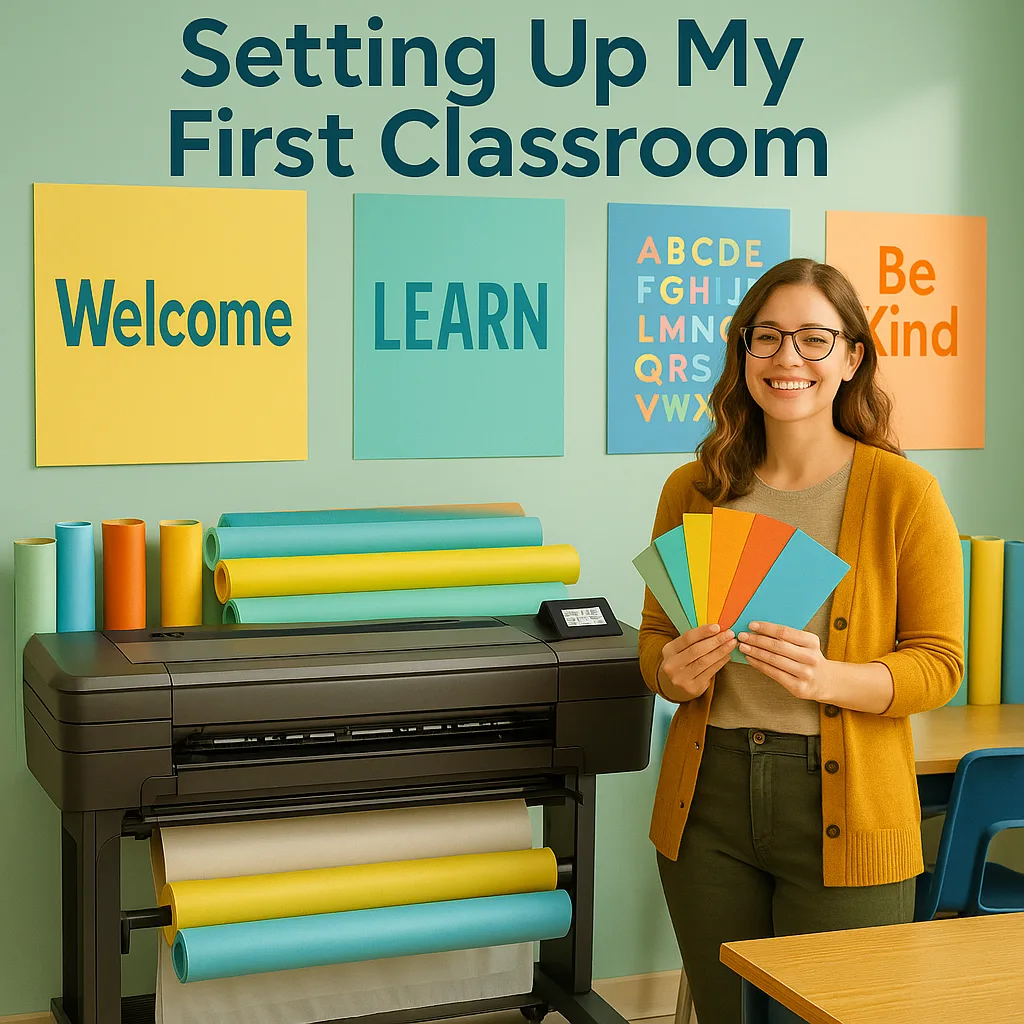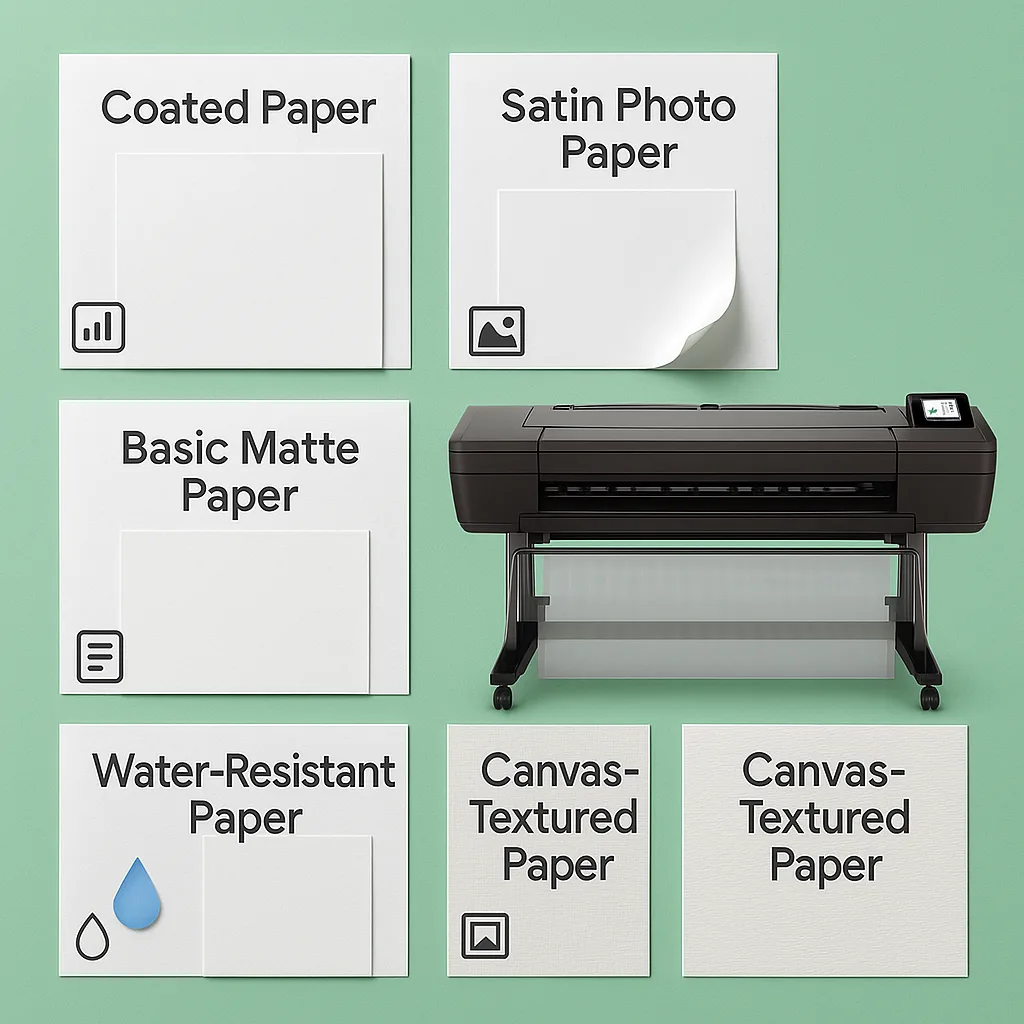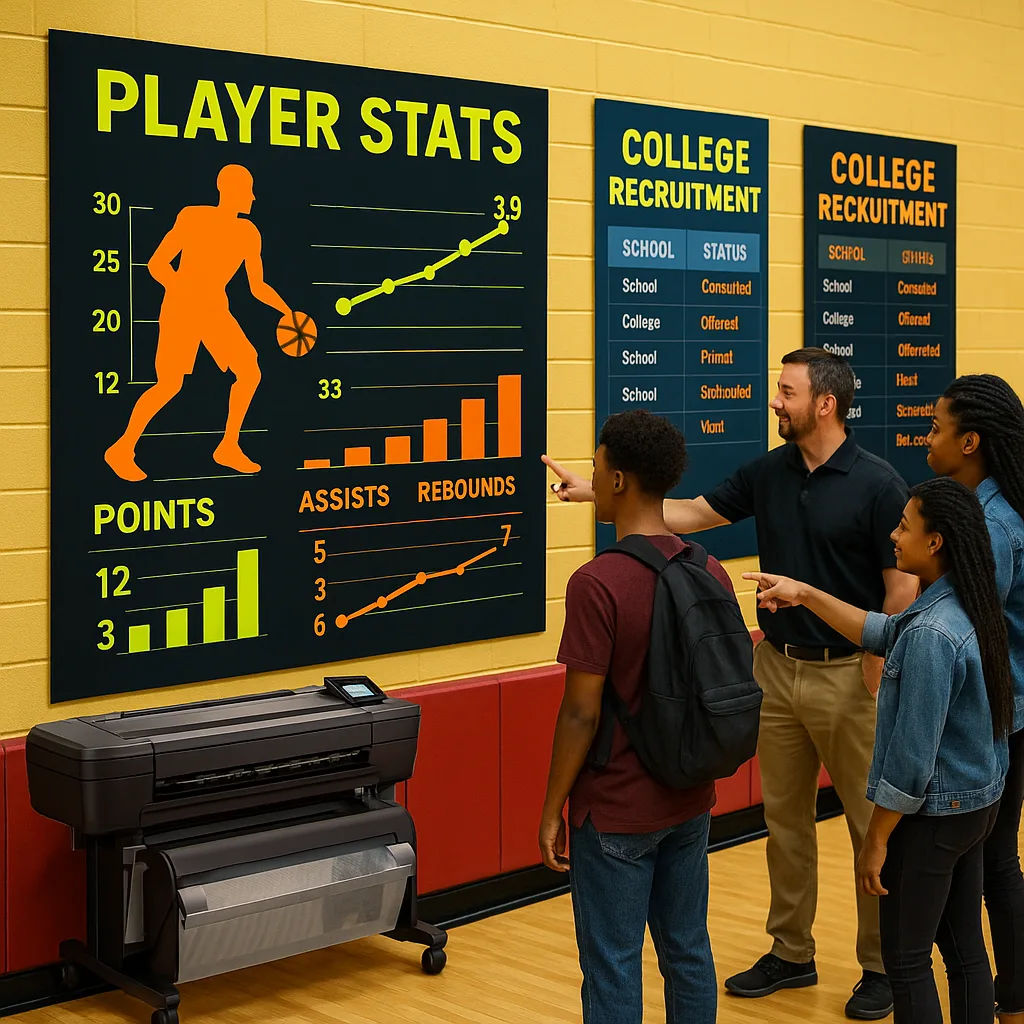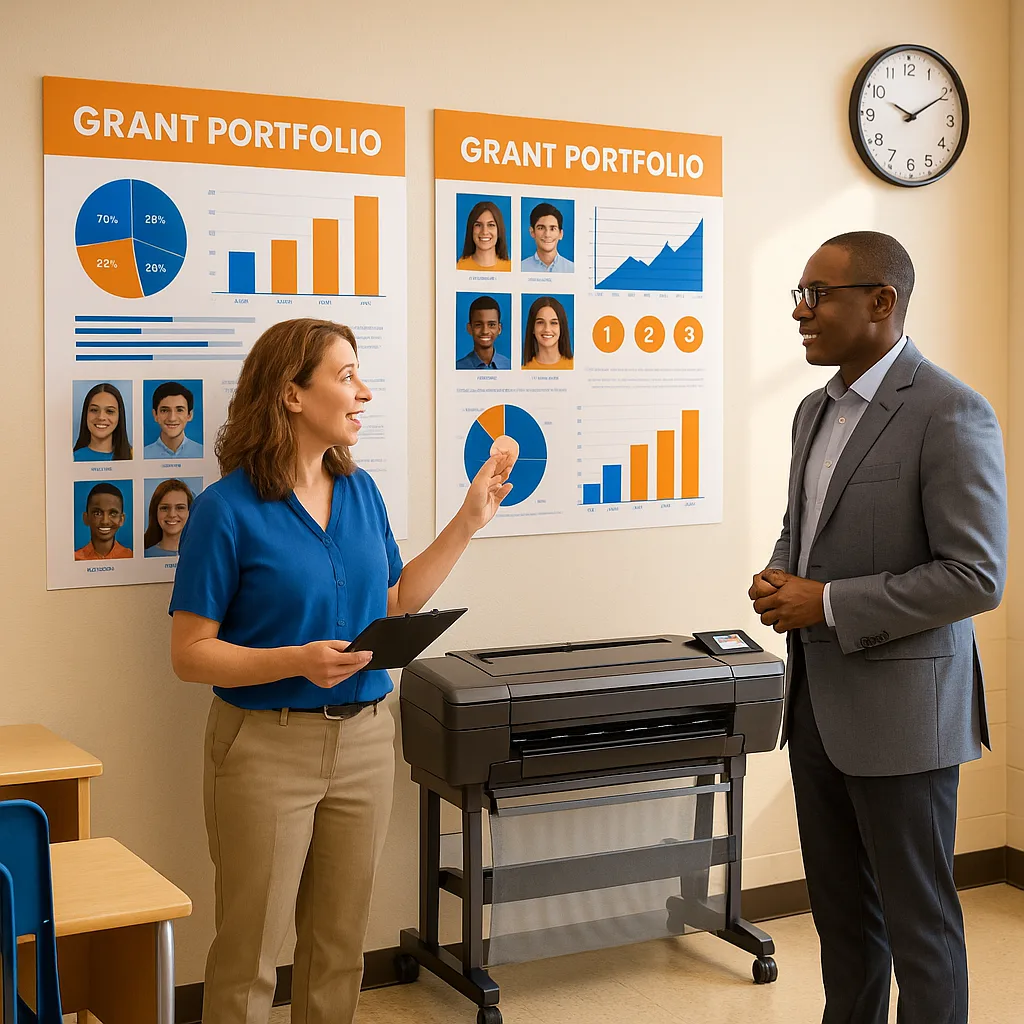
Poster Makers for Schools Paper Guide | First-Year Tips
The First-Year Teacher’s Guide to Poster Paper Types
What You Actually Need vs. What’s Nice to Have
Remember that first week when you walked into your classroom supply closet and felt completely overwhelmed? That was me last August, staring at catalogs filled with dozens of paper options, wondering if I really needed “heavyweight coated thermal-resistant paper with UV protection.” Spoiler alert: I didn’t! After countless printing experiments (and yes, a few paper jams), I’ve learned what actually works for everyday classroom use with poster makers for schools paper types.
Understanding Poster Makers for Schools Paper Types: The Basics
Let me break this down simply. When working with poster maker machines, you essentially have three main categories to consider. First, there’s your everyday workhorse paper – the kind you’ll use for anchor charts, daily schedules, and student work displays. Second, you have specialty papers for specific purposes like outdoor signs or laminated resources. Finally, there’s the “nice-to-have” category that sounds fancy but might gather dust in your supply closet.
Research from the Education Week Teacher Workload Survey shows that first-year teachers spend an average of 11 hours weekly on classroom preparation. Therefore, choosing the right materials matters – you want papers that work the first time, every time. Trust me, reprinting because you chose the wrong paper type is time you simply don’t have!
Essential Paper Types: Your Must-Have List
After printing hundreds of posters this year, I’ve identified three absolute essentials for any first-year classroom. These papers handle 90% of what you’ll need, keeping both your budget and sanity intact.
Standard Coated Paper
Satin Photo Paper
When you need that extra pop! Satin Photo Paper makes colors vibrant without the glare. I use this for permanent displays like classroom rules and our reading corner posters. No lamination needed – it’s durable enough on its own!
Basic Matte Paper
Budget-friendly and versatile! Perfect for temporary displays, draft prints, or student work. Since it’s the most affordable option, I keep plenty on hand for spontaneous learning activities.
Understanding Poster Makers for Schools Paper Types: Specialty Options
Beyond the basics, certain situations call for specialty papers. Here’s what I’ve found actually useful versus what marketing materials suggest you “need.”

Actually Useful Specialty Papers:
• Adhesive vinyl for hallway signs (survives cleaning crews!)
• Water-resistant paper for science centers
• Repositionable cling for changing displays
• Canvas texture for student art showcases
The Education Express 24″ Package A actually includes starter rolls of various paper types, which saved me from ordering papers I’d never use. Having that variety pack helped me figure out what works for my specific classroom needs without breaking the bank on full rolls.
Common First-Year Mistakes (And How to Avoid Them)
Let me save you from my early blunders! These mistakes cost me time, money, and a few tears during those overwhelming first months.
Buying the cheapest paper possible: I learned quickly that ultra-thin paper jams frequently and tears easily. The slight savings aren’t worth reprinting posters multiple times!
Over-investing in specialty papers: That holographic paper seemed amazing in August. By October, I’d used exactly two sheets for our “Star Student” board.
Ignoring paper width compatibility: Always check your printer specifications! I ordered beautiful 36″ paper before realizing our machine maxes out at 24″.
Storing paper incorrectly: Humidity is paper’s enemy. Keep rolls upright and covered to prevent curling and color degradation.
According to the National Center for Education Statistics, first-year teachers spend approximately $500 of their own money on classroom supplies. Making smart paper choices helps stretch those precious dollars further!
Budget-Stretching Strategies That Actually Work
Working in a Title I school means every dollar counts. Here are strategies I’ve discovered for maximizing your paper budget while still creating an engaging classroom environment.
First, embrace the power of reusable displays. Instead of printing new posters for every unit, I create generic templates that work with dry-erase markers or sticky notes. For example, our “Learning Target” poster uses coated paper with spaces for me to add specific objectives each week.
Additionally, partner with grade-level teammates to bulk order supplies. We’ve negotiated better prices by ordering paper as a team, and we share specialty papers for occasional projects. This collaboration has cut our individual costs by nearly 30%!
The Lifetime Design Service has been a game-changer for stretching my budget. Rather than purchasing expensive pre-made posters, I send rough sketches and get back professional designs that I can print on basic paper. It’s like having a graphic designer on speed dial!
Making the Most of Your Poster Maker Machine
Understanding paper types is just the beginning. To truly maximize your investment in poster maker machines, consider these practical applications I use weekly.
For classroom management, I print behavior charts on standard coated paper and add clear contact paper for durability. This combination costs less than laminating but lasts just as long. Our “Voice Level” chart has survived enthusiastic first-grade pointing for six months straight!
Moreover, I’ve discovered that mixing paper types creates visual hierarchy. Important safety information goes on bright satin paper to catch attention, while supporting materials use matte paper to reduce visual overwhelm. This strategy aligns with research on color psychology in educational settings.
Final Thoughts: Start Simple, Grow Smart
As I wrap up my first year, I realize that success with classroom posters isn’t about having every fancy paper type available. Instead, it’s about choosing versatile basics that support your teaching style and student needs.
Start with the essentials I’ve outlined, experiment with one or two specialty papers per semester, and don’t feel pressured to match Pinterest-perfect classrooms. Remember, the best poster is one that actually helps your students learn, regardless of whether it’s printed on holographic paper or basic matte stock.
Most importantly, take advantage of resources like cost-per-print calculators and educator support services. These tools help you make informed decisions about paper purchases and ensure you’re getting the most value from your poster maker investment.
Your first year is about survival and finding what works for you and your students. With smart paper choices for your poster makers for schools paper types, you’ll create a vibrant, functional classroom without breaking the bank or your spirit. Trust me – by next August, you’ll be the one giving paper advice to the new first-year teacher down the hall!







